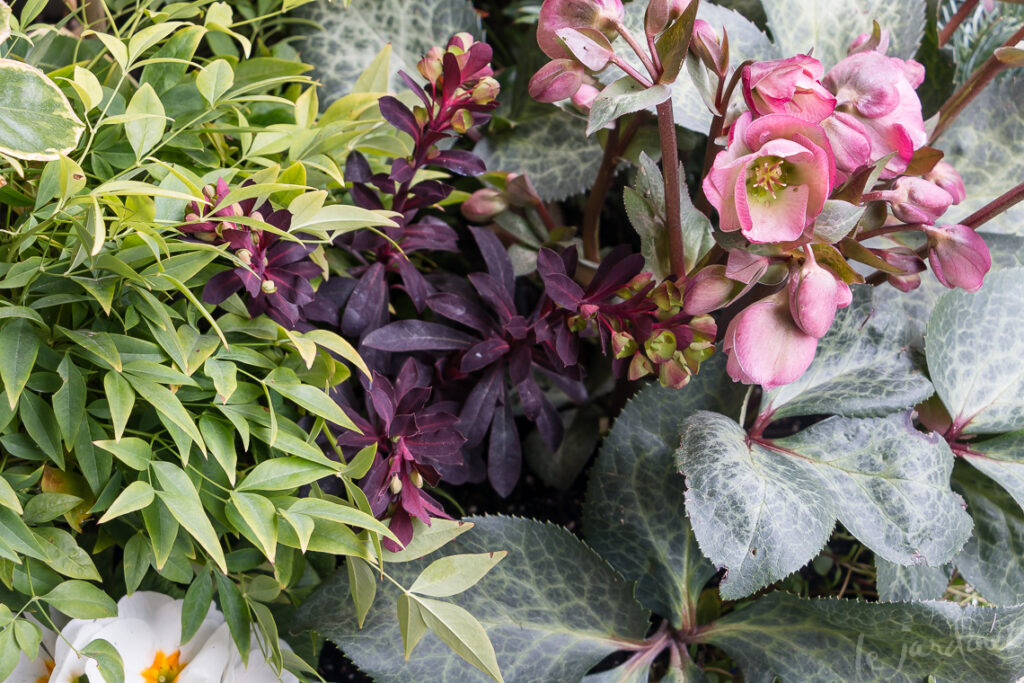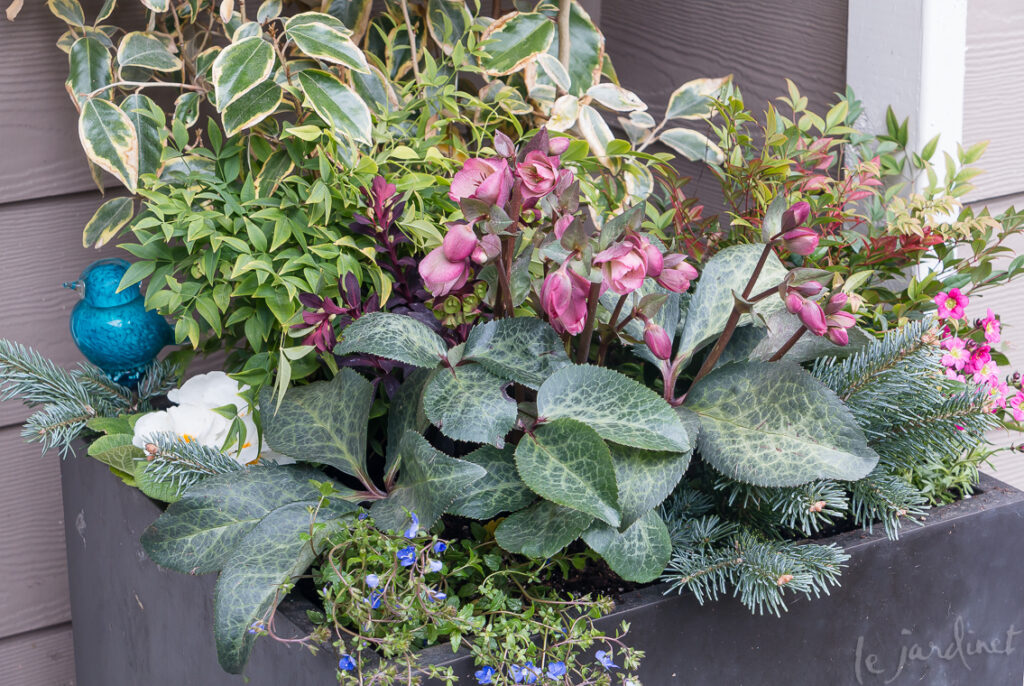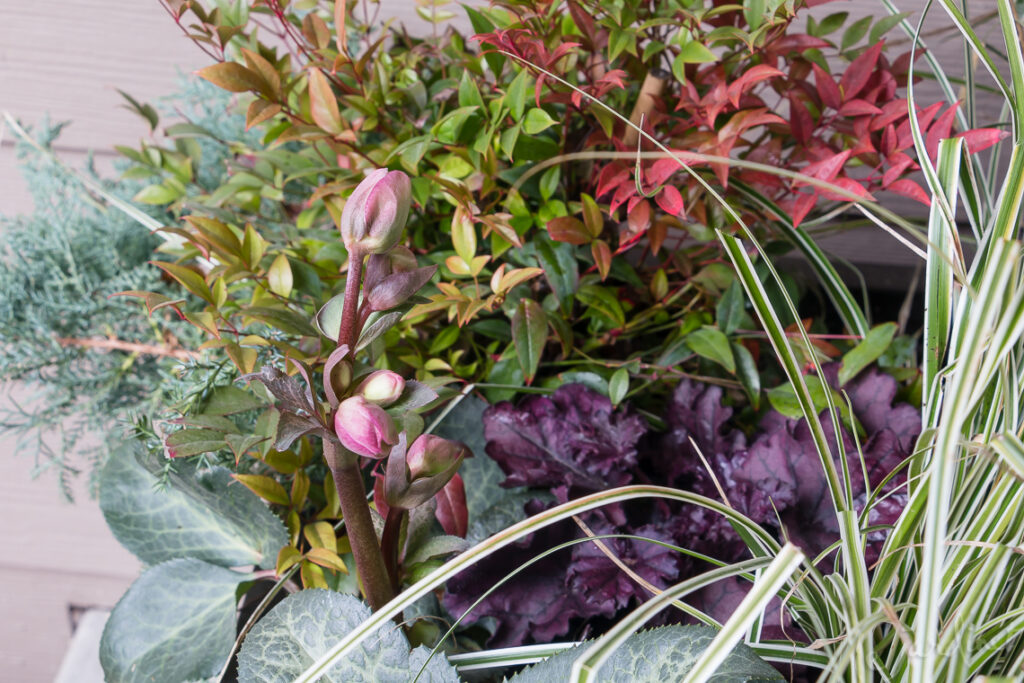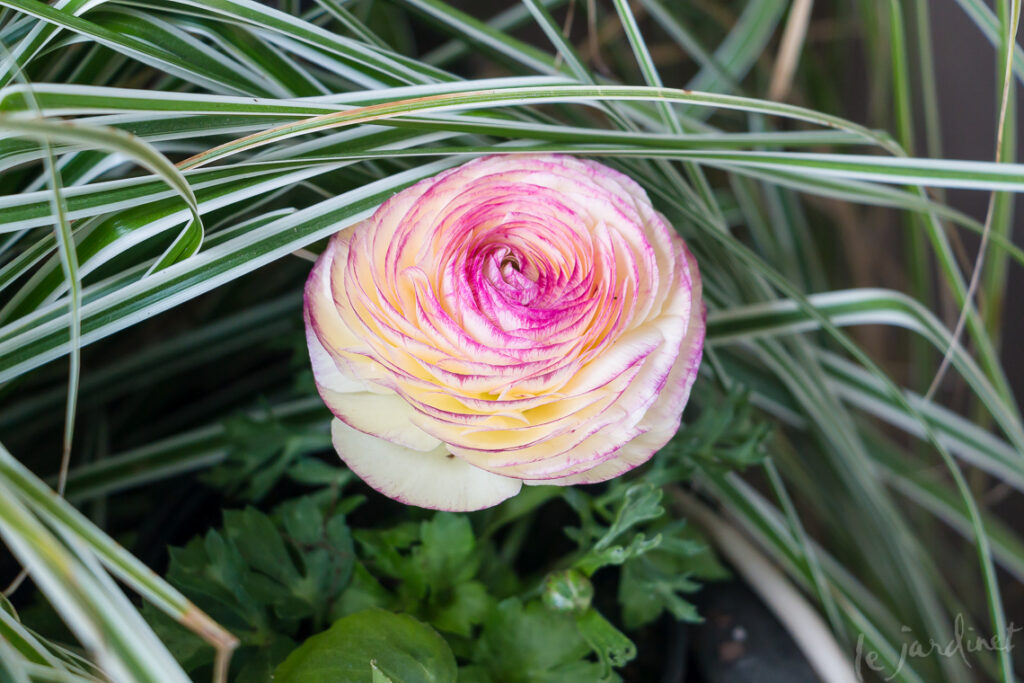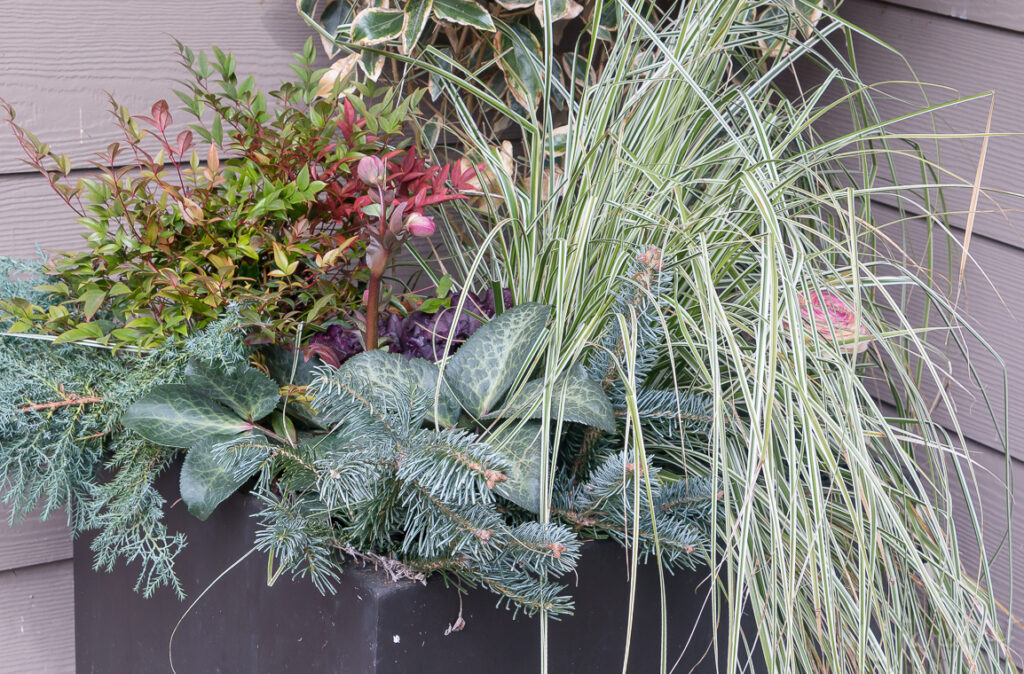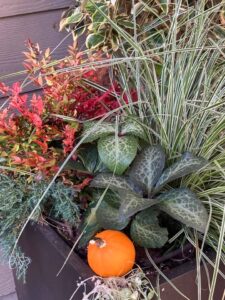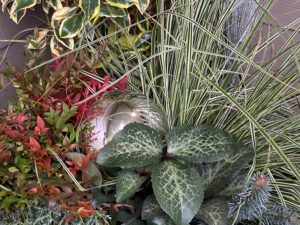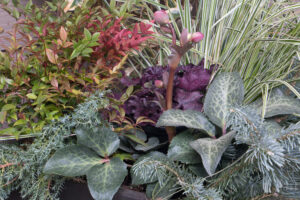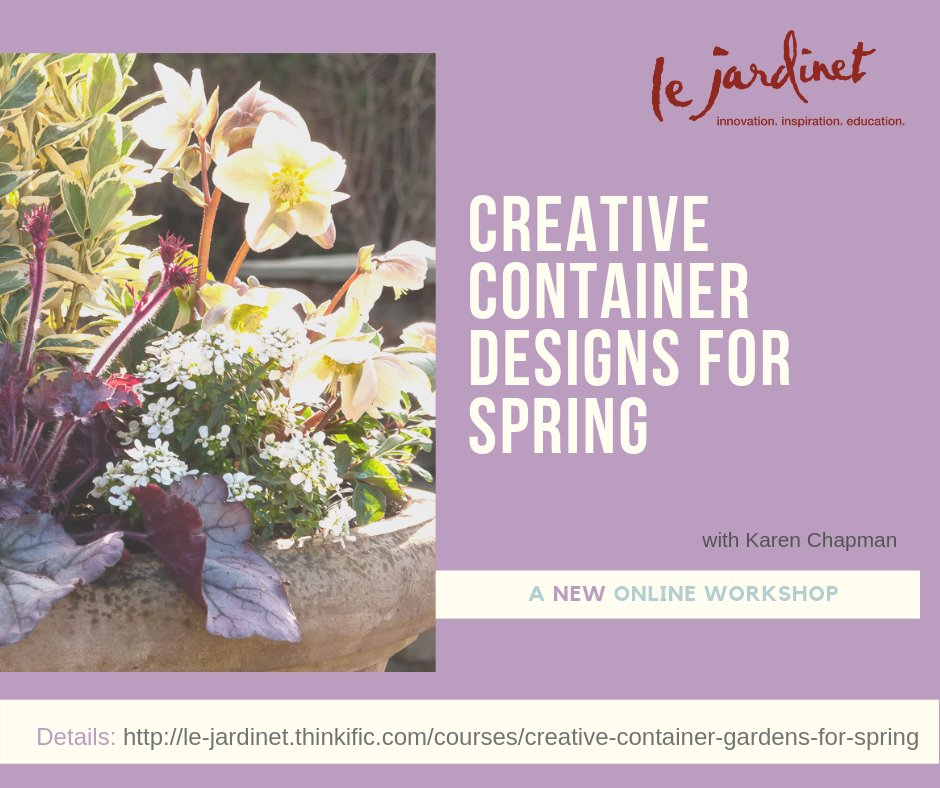Early Spring Container Refresh
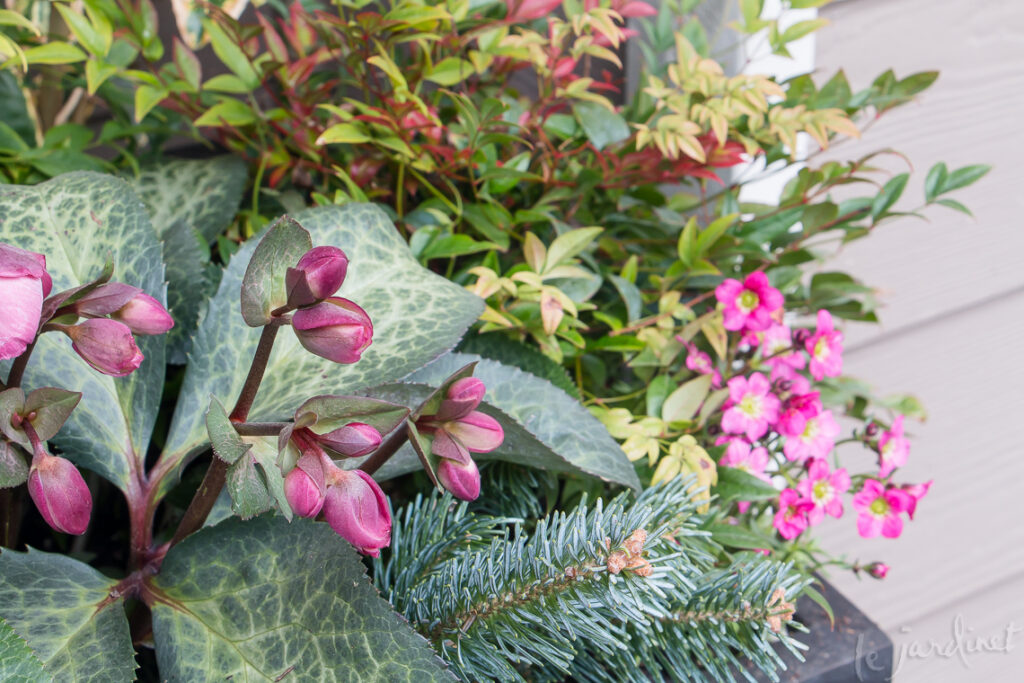
It's the shoulder season here in Seattle. Sometimes I need a long-sleeved T-shirt + fleece vest+ puffer jacket. Other days I'm too warm in short sleeves. For my container gardens that means things can start to look a little winter-weary, yet it's too soon for my favorite summer annuals and frankly I don't have much of a budget for pots at this time of year.
The solution is to remove what's definitely past its best, distract the eye from anything which is in recovery mode and fill in with things that I may already have in the garden – or that I can add to my landscape come summer.
Preparation
Flanking my front door are two pots. You saw one of them (to the left of the door) in Holiday finery a few months ago:
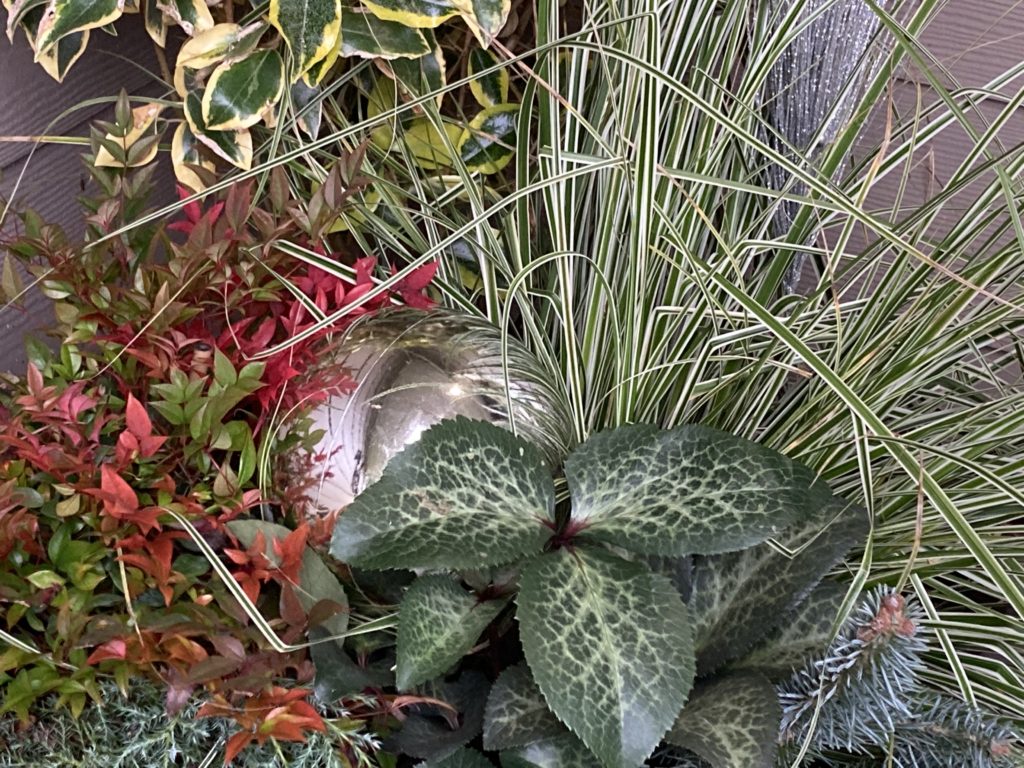 With the Holiday bling removed from both containers it was time to reassess and refresh.
With the Holiday bling removed from both containers it was time to reassess and refresh.
I first removed anything diseased, clipped off any really nasty leaves and removed a tiny heuchera that had been struggling all winter in one pot.
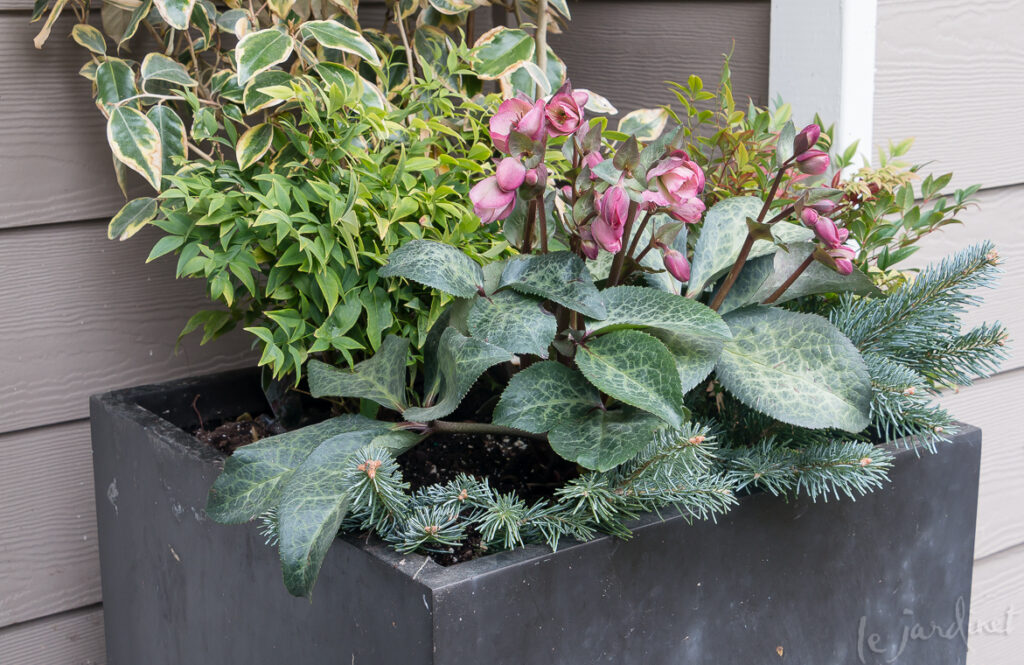
Pot to the right of the front door: after removing the obviously dead things it was time to assess the remaining space and see what was needed
To the right of the front door I was left with a badly cold-damaged Gilt Edge silverberry, a Cool Glow Lime and Cool Glow Pomegranate nandina, a Frostkiss Dorothy's Dawn hellebore and some cut branches from a blue fir I have growing in the garden. The latter was left over from a Holiday display, the cut stems just pushed into the potting soil.
I know the silverberry will grow new leaves – I can already see the buds, but I need to refocus attention on the lower plantings for a while! Thank goodness for these other beauties.
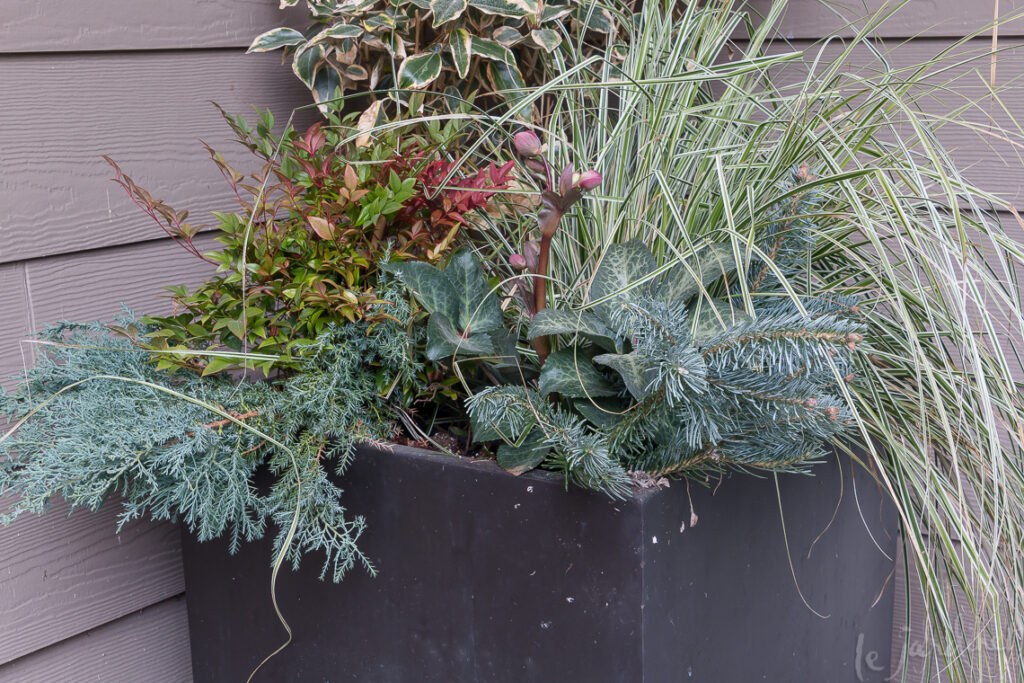
Pot to the left of the door: I had the same silverberry, hellebore and cut fir branches, supplemented with Montana Moss juniper, Cool Glow Peach nandina and a gorgeous Carex
The two containers are not planted identically although they do have some key plants in common. Light exposure is less of a consideration in winter/early spring when we get relatively little sunshine here in greater Seattle anyway so I can really mix and match plants to work with my color scheme and worry less about potential sunburn. For reference, however, this faces west but the container to the left is in a little more shade.
How to choose new additions
It would have been so easy to buy a 4" pot of daffodils, tuck it in and call it good but that wouldn't have given me the look I was going for since there was no reason to suddenly introduce a vibrant golden yellow. I always design 'foliage first' so looked to see what color cues I had from the existing plants.
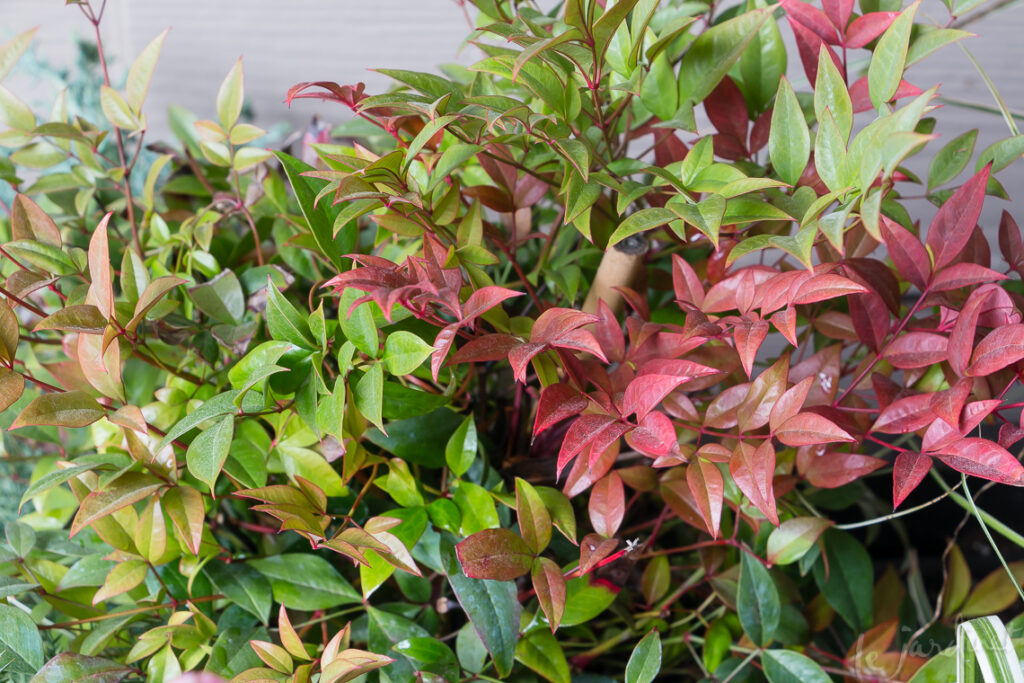
Cool Glow Peach nandina is known for its apricot shaded foliage in fall and winter, but in my container garden also gets these rich warm tones in March.
The three nandina I have in the pots suggest using shades of mid-green, blue-green, lime green, rose, and deep red. The conifers already repeat the blue tones and the hellebore leaf is a beautiful patterned blue-green with pale yellow-green speckles. I knew that adding shades of pink, rose and burgundy would work with both containers and that I could introduce white for a little extra sparkle thanks to the variegated sedge already suggesting that.
I was ready to go shopping!
Right container makeover
This little Miner's Merlot spurge does so much. It adds depth to the pale pink hellebore flowers and echoes the purple in the hellebore leaf axils while the chartreuse bracts (flowers) repeat the lime shade of the Cool Glow Lime nandina as well as drawing attention to the inner depths of the hellebore bloom. Couldn't do better! Now for the front edges of the container.
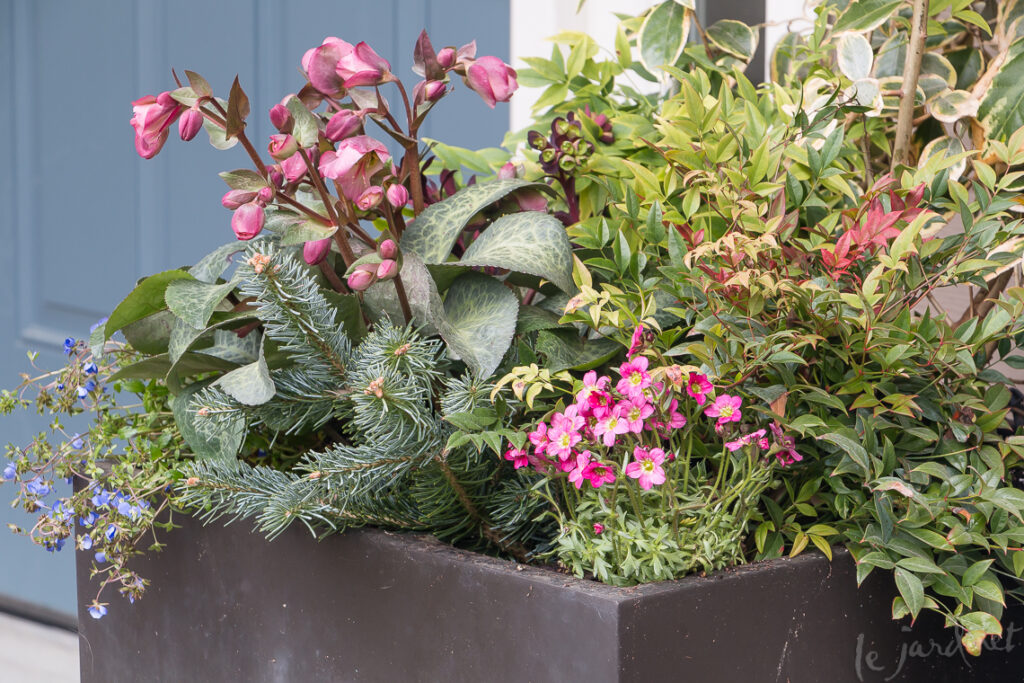
Early Carnival saxifrage repeats the hellebore color at the edge of the container – and also echos the warm Cool Glow Pomegranate nandina foliage.
I chose two early flowering groundcovers to strut their stuff. A pretty saxifrage with deep pink blooms was a way to bring those warm tones from foliage and flowers down to the very front of the pot, while Georgia Blue speedwell was easy to tuck under the hellebore foliage and gave a counterpoint of cool shades.
The finishing touches were an inexpensive white primrose and a fun blue glass bird.
Left container makeover
I needed the left pot to complement the right without directly repeating it so selected Forever Purple heuchera rather than the spurge. This stunning variety tolerates both sun and shade but will eventually need to be re-positioned as it can get up to 22 inches in diameter. Like the spurge, however, its luscious dark foliage adds much needed depth to the paler hellebore blooms.
I also added in an especially pretty ranunculus, (Ranunculus 'Mache Vanilla Bicolor Medley'). The colors were perfect. It will only be a short-term addition but it makes me smile. (Note that when seed is a blend or medley there will be considerable color variation between seedlings).
The final design will work well until I'm ready to replant for summer in mid-May, although the ranunculus will be removed before then and the sedge fluffed to disguise the gap.
In case you'd like to see how this has been refreshed since fall here are a few snapshots. See how easy container design can be when you use a backbone of beautiful, colorful shrubs?
- Fall 2021
- Winter 2021
- March 2022
Budget Conscious Tips for Early Spring
1. Don't waste your money on slow release fertilizers such as Osmocote as they need soil temperatures of 50-55' to be activated. For fall/winter plantings I use bone meal or bulb food which are both high in phosphorous and promote strong root growth. Honestly, at this time of year you rarely need any additional fertilizer. The plants you have just purchased have been fertilized by the growers and have enough residual nutrients to carry them through until May.
2. Using perennials means you can transplant them into the landscape when they have finished their prime time in your containers. Only the ranunculus and primrose will be composted from my selection. Everything else will be re-purposed in the garden. Next year I can simply dig them up and re-pot them again if I choose to.
3. Use cut greenery to fluff the edges of pots just as you did for the Holidays.
Want More Ideas?
I've got plenty! Check out my online course Creative Container Designs for Spring.
Subscribe to Receive Blog Posts
Gardening inspiration delivered right to your inbox from Le Jardinet
